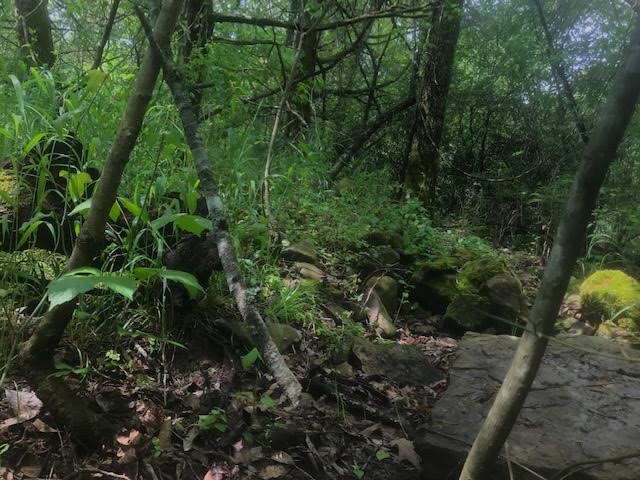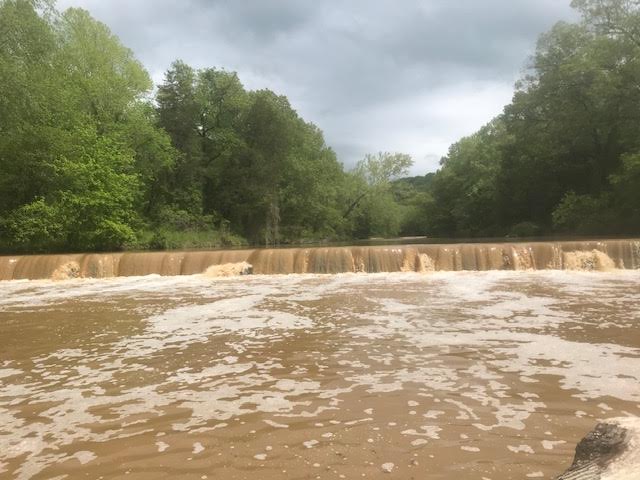By Dr. Curtis Varnell
Lunchtime had arrived at Cedarville schools but, instead of spending my time at a local café, I headed six miles north to visit the famous Natural Dam. Natural Dam is a formation of Atoka sandstone that extends almost 200 foot across Mountain Fork Creek, impeding flow and creating a small lake. As the natural basin behind the dam fills, water flows over the eight-foot high dam and thunders onto the rocks below.

William Larrimore, one of the earliest settlers in Crawford County, first came across the formation in 1819 while on a hunting trip. Infatuated with the beauty of the area and the potential of using the power created by the falls, he soon returned and constructed a grist mill on the site. The mill, set with a horizontal shaft connected to several wooden paddles, was powered by the force of the falling water. Inside the mill, a series of gears slowly turned mill stones used to grind corn and flour into a useable product. In the 1850’s, Arkansas geologist and artist, David Dale Owen passed through the area and drew a picture of the formation and mill. The drawing illustrates the natural peacefulness and beauty of the area.
Clara Eno, in her History of Crawford County, searched early tax records and found that Larrimore was one of 96 original families that settled Crawford County. Of interest is the fact that none of the original families had a tax rate that exceeded $5.83 per year.
Land surrounding the dam was rich and fertile and, as farmers moved in nearby, the small town grew to include a Presbyterian church and several stores. Located on the main road leading to Cane Hill and thus into Fayetteville and N.W. Arkansas, the dam was a popular stopping off place for travelers. Both before and after the Civil War, camp meetings, often lasting two weeks or more were held along the creek. People from far and near came to the nightly meetings and many stayed in special cabins built to accommodate the visitors during their stay. Most of the revivals involved those of Methodist or Cumberland Presbyterian faith with both denominations eventually constructing churches in the area.

The Civil War was a time of trouble for the region. Armies from both sides travelled up and down the road and several skirmishes were fought in the area. Confederate General Ben McCulloch believed that all mills should be burned so that they did not fall into use by occupying Union forces. So saying, he or his men destroyed most mills in the region, including the Fayetteville steam mill which had the capability of producing 10,000 pounds of flour daily. The mill owned by Larrimore was probably destroyed during this time because records indicate a man by the name of Boyd operated a mill on that site. There are some stones from the mill remaining on the west side of the dam.
By the 1870’s, Col. H.P. King bought up several acres of surrounding land and built a store east of the dam on a part of the old wire and Butterfield stage road. That road is now highway 59. That store and dwelling house soon became the nucleus for a new Natural Bridge and outgrew the original located on the creek. The town grew to include a post office, a school, a gin, and several businesses. Gradually the old town disappeared and became what it is today, a place for leisure, picnics, and swimming.
Today, a part of the National Forest, visitors can wade in the waters below the dam, swim in the reservoir, or just observe the beauty of nature. Easy to locate, take exit 5 at Van Buren, go North on Hwy 59 until you see the small town of Natural Dam. Exit left at the sign for the falls and one can drive right to the site. Of course, traveling south from Siloam Springs will bring you to the same location. Either way, it is a great place to enjoy the Natural State.







